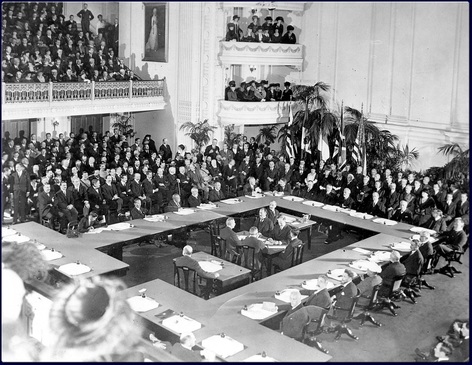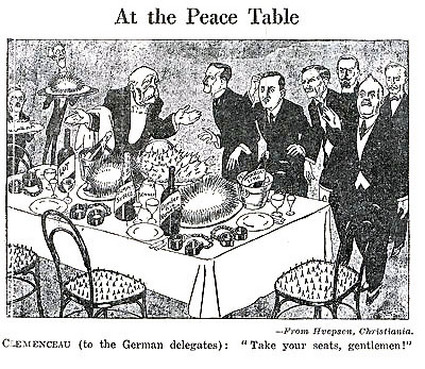Treaty of Versailles

The signing of the Treaty of Versailles ended World War I. Unfortunately, it also set the stage for the largest global conflict in history, World War II. The terms of the treaty severely weakened and punished Germany, demanding over $64 billion in reparations and virtually obliterating the German military. In addition, many nations who sided with the Allies, such as Italy and the USSR, were discontented because they did not receive land promised to them by the Allies.
The signing of the Treaty of Versailles was a greatly celebrated event. Most people did not yet know that the leaders of Europe were in fact creating a foundation for another World War.

It was well-known that Germany was being treated this way as a result of private feuds between Germany and France, and Germany and Britain. This political cartoon suggests Clemenceau's motives for supporting harsh treatment of the Germans; he meant to destroy them, securing France's security and dominance.

The Treaty of Versailles called for coalition of nations to be established in order to avoid another major conflict. It was meant to be a forum in which nations could solve their problems peacefully and without war. Woodrow Wilson, the President of the United States, relentlessly pushed for the formation of the League of Nations, and while he did succeed in this aspect, he never managed to convince the United States Senate to allow the United States to join. The absence of this major world power severely weakened the League, for they could only make demands or condemn actions but not take military action. This made it easy for individual nations to ignore the league's demands. As nations like Japan and Germany continued their aggression and the League of Nations did nothing, Europe spiraled towards war.
